Mystery Of Ancient Beehive Tombs Around The World
A. Sutherland - AncientPages.com - Strange ancient domed structures, commonly called “beehive tombs,” also known as Tholos tombs, have been found in many places around the world. What is odd about these ancient structures is that they are referred to as tombs, and yet no burial remains have been found inside them.
The most impressive beehive structure is perhaps the tomb or treasury of Atreus, sometimes called the Tomb of Clytemnestra in Mycenae, Greece. It was built around 1350 to 1250 BC. and it is the only surviving architectural structure of the Mycenaean civilization.
Entrance to the Treasury of Atreus. Credit: Adobe Stock - Karl Allen Lugmayer
The diameter of the tomb is almost 50 feet (15 meters). The enormous monolithic lintel of the doorway weighs 120 tons and is 29.5 feet (9 meters) long, 16.5 feet (5 meters) deep, and 3 feet (0.9 meters) high. It is surmounted by a relieving triangle decorated with relief plaques. It is said to have been the burial place of the king named Atreus or his son Agamemnon; interestingly, no funerary remains were ever found in it. Still, it remains one of the most impressive burial structures in Greece and was the tallest and widest dome in the world for over one thousand years until the construction of the Temple of Mercury in Baiae.
Not far from the ancient Thracian capital, Seuthopolis, in Bulgaria, we come across the famous brick beehive tomb of Kazanlak. Situated within a necropolis, the tomb is composed of a narrow corridor and a vaulted burial chamber decorated with murals of ritual funeral feasts. The tomb dates back to the fourth century B.C.
In Oman, ancient beehive tombs date to between 3500 and 2500 B.C. No burial remains have ever been retrieved from these “tombs,” though there seems no other purpose for the buildings. They have only superficial similarities with the Aegean tombs (circular shape) as they are built entirely above ground and do not share the same tripartite structure—the entrances are usually an undifferentiated part of the circular walling of the tomb.
Beehive tombs in Oman. Credit: Adobe Stock - Kylie
In Sudan, there are 17th-century beehive-like structures called Qubbas, or Koubbas, made of mud brick.
Many beehive-like stone structures were also once present in the eastern United States, presumably made by Native Americans. Over a century ago, archaeologists from the Smithsonian Institute found enigmatic cemeteries filled with beehive-shaped stone tombs in Caldwell County, North Carolina, Sullivan County, Tennessee, and Licking County, Ohio. Curiously, although broken pottery was found at these locations, human remains were not.
In the Lake Titicaca region of Peru there are many ancient sites where ancient structures called Chullpa towers have been discovered.
Sillustani Tombs – High Plains, Peru are set on a hill above Lake Umayo and were used as graves for Colla nobility. Credit: Adobe Stock - klublu
The Chullpas are wide at the top and taper to a narrower diameter at the bottom, like a funnel. It has been suggested that these enigmatic towers were probably used as grain storage silos, with the small doors being ideally suited for protecting the crop. Another scientific opinion is that the towers were burial chambers.
Many historians maintain that beehive tombs required considerable effort to construct and thus were only available to powerful leaders. It is also often stated that these ancient structures originated in ancient Greece and are a monumental Late Bronze Age development of either the Mycenaean chamber tombs or tumulus burials dating to the Middle Bronze Age. However, the origins and development of the Beehive tombs are disputed since it is clear it is a common phenomenon in various parts of the world.
Yet, the real mystery lies in the fact that these "tombs" lack human remains.
Updated on February 15, 2024
Written by – A. Sutherland AncientPages.com Staff Writer
Copyright © AncientPages.com All rights reserved. This material may not be published, broadcast, rewritten or redistributed in whole or part without the express written permission of AncientPages.com
Expand for references
More From Ancient Pages
-
 Mysterious Ancient Human ‘Ghost’ Species Discovered With Help Of Saliva
Archaeology | Jul 25, 2017
Mysterious Ancient Human ‘Ghost’ Species Discovered With Help Of Saliva
Archaeology | Jul 25, 2017 -
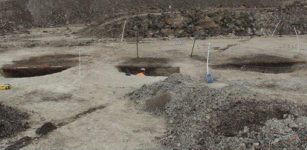 Significant Mesolithic Site With Unusual Pits Discovered In Bedfordshire
Archaeology | Jul 3, 2023
Significant Mesolithic Site With Unusual Pits Discovered In Bedfordshire
Archaeology | Jul 3, 2023 -
 Sole Survivor Recalls An Incredible Unexplained Mountain Mystery
Featured Stories | Aug 7, 2023
Sole Survivor Recalls An Incredible Unexplained Mountain Mystery
Featured Stories | Aug 7, 2023 -
 A Glimpse Into The Past – Sights And Sounds Of St. Paul’s Cathedral Recreated
Archaeology | Oct 8, 2021
A Glimpse Into The Past – Sights And Sounds Of St. Paul’s Cathedral Recreated
Archaeology | Oct 8, 2021 -
 Robert The Bruce: Mighty King Of Scots And Great Scottish Hero
Featured Stories | Oct 13, 2016
Robert The Bruce: Mighty King Of Scots And Great Scottish Hero
Featured Stories | Oct 13, 2016 -
 Perplexing Accounts Of Ancient People Who Demonstrated Incredible Powers Of The Human Mind
Featured Stories | Feb 1, 2019
Perplexing Accounts Of Ancient People Who Demonstrated Incredible Powers Of The Human Mind
Featured Stories | Feb 1, 2019 -
 Pharaoh Menkaure – Egyptian Ruler Who Tried To Outsmart Fate
Featured Stories | Nov 18, 2020
Pharaoh Menkaure – Egyptian Ruler Who Tried To Outsmart Fate
Featured Stories | Nov 18, 2020 -
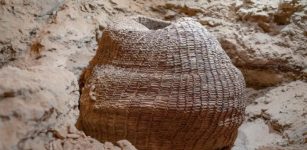 Perfectly Preserved 10,500-Year-Old Basket Found In Muraba’at Cave
Archaeology | Mar 18, 2021
Perfectly Preserved 10,500-Year-Old Basket Found In Muraba’at Cave
Archaeology | Mar 18, 2021 -
 Climate In The Andes Has Driven 7,000 Years Of Dietary Changes – New Study Reveals
Archaeology | Feb 9, 2022
Climate In The Andes Has Driven 7,000 Years Of Dietary Changes – New Study Reveals
Archaeology | Feb 9, 2022 -
 Amazing World’s Largest Mosaic Piece Made By 13 Different Ancient Civilizations At Museum Hotel Antakya
Featured Stories | May 9, 2019
Amazing World’s Largest Mosaic Piece Made By 13 Different Ancient Civilizations At Museum Hotel Antakya
Featured Stories | May 9, 2019 -
 More Than 1,000 Prehistoric Burial Mounds Discovered In The Netherlands
Archaeology | Jan 26, 2023
More Than 1,000 Prehistoric Burial Mounds Discovered In The Netherlands
Archaeology | Jan 26, 2023 -
 Homo Sapiens Survived In The Kalahari Desert More Than 20,000 Years Ago – Stone Age Discovery Shows
Archaeology | Aug 17, 2022
Homo Sapiens Survived In The Kalahari Desert More Than 20,000 Years Ago – Stone Age Discovery Shows
Archaeology | Aug 17, 2022 -
 Ancient DNA Reveals Irish Are Not Celts – Irish Ancestors Came From Biblical Lands – Scientists Say
Archaeology | Mar 30, 2020
Ancient DNA Reveals Irish Are Not Celts – Irish Ancestors Came From Biblical Lands – Scientists Say
Archaeology | Mar 30, 2020 -
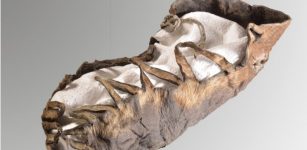 Extremely Well Preserved 2,000-Year-Old Child Shoe Discovered In Salt Mine
Archaeology | Sep 5, 2023
Extremely Well Preserved 2,000-Year-Old Child Shoe Discovered In Salt Mine
Archaeology | Sep 5, 2023 -
 On This Day In History: Leon Trotsky Was Assassinated – On August 20, 1940
News | Aug 20, 2016
On This Day In History: Leon Trotsky Was Assassinated – On August 20, 1940
News | Aug 20, 2016 -
 How Did The Renaissance Change Europe?
Ancient History Facts | Oct 10, 2019
How Did The Renaissance Change Europe?
Ancient History Facts | Oct 10, 2019 -
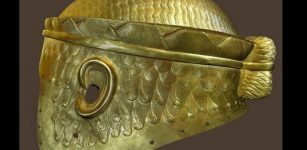 Helmet Of Meskalamdug – Sumerian King Of The First Dynasty Of Ur
Artifacts | Apr 14, 2016
Helmet Of Meskalamdug – Sumerian King Of The First Dynasty Of Ur
Artifacts | Apr 14, 2016 -
 On This Day In History: Great Siege of Malta: Ottoman Forces Made Attempt To Conquer Malta And Failed – On May 18, 1565
News | May 18, 2016
On This Day In History: Great Siege of Malta: Ottoman Forces Made Attempt To Conquer Malta And Failed – On May 18, 1565
News | May 18, 2016 -
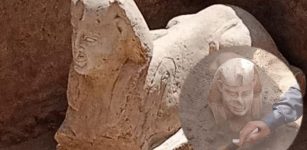 Sphinx Statue With A Smiley Face And Two Dimples Unearthed In Qena, Egypt
Archaeology | Mar 6, 2023
Sphinx Statue With A Smiley Face And Two Dimples Unearthed In Qena, Egypt
Archaeology | Mar 6, 2023 -
 Attempt To Smuggle Three Artefacts From Alexandria Port – Failed
Artifacts | Oct 28, 2020
Attempt To Smuggle Three Artefacts From Alexandria Port – Failed
Artifacts | Oct 28, 2020



